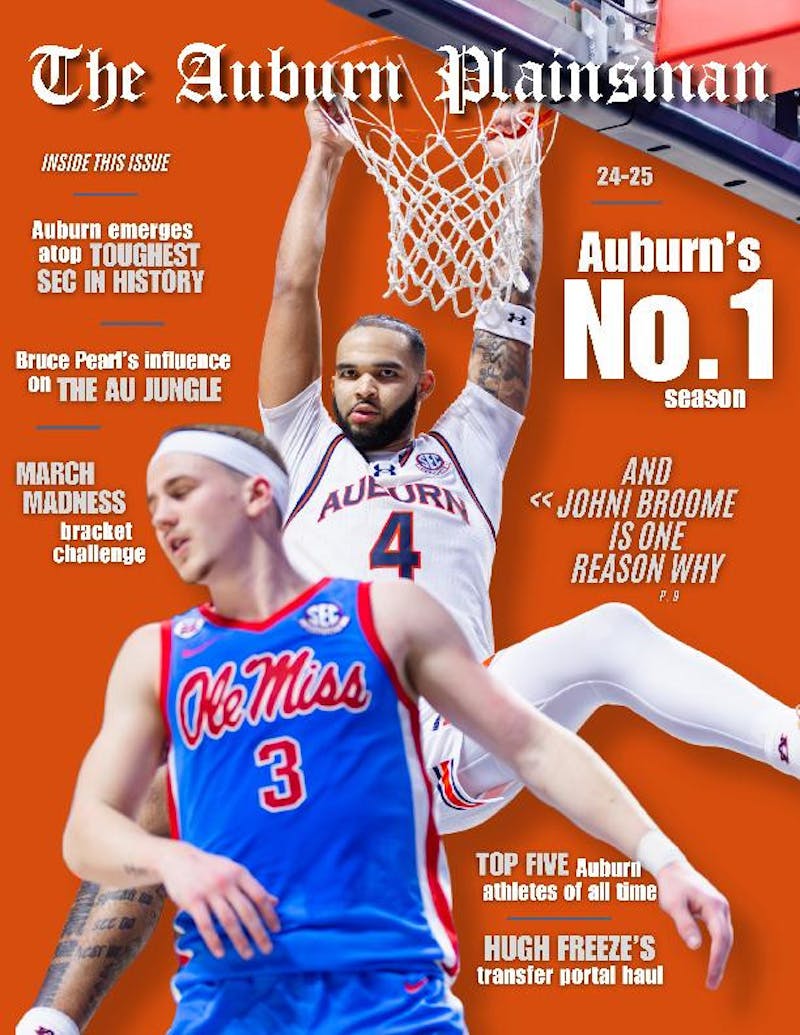It's March 2013 in Destin, Fla., and Trinidad James' "All Gold Everything" can be heard as the song plays continually.
"Popped a Molly, I'm sweating. Woo!"
It echoes out again. The song's music video has already amassed more than 10 million views on Youtube. It's most famous line is iconic among a certain demographic.
The lyrics reference MDMA, a drug sold in a crystalized powder form. It goes by Molly, and it is the active ingredient in Ecstasy, but Molly enjoys a breakout all of its own.
"I really just did some," giggles a young woman after shouting along to the song. "It's great."
She and many other beachgoers roll, the most common euphemism for being high on Molly, and they aren't shy about it.
The beach is dotted by young adults wearing tank tops with slogans such as, "Has anyone seen Molly?" and "Roll face, not tide." They have no desire to hide the recreational drug use.
"People take Molly to have fun," said one experienced Molly user, who estimated he had taken the drug more than 30 times. "It's the entire point of the drug."
This connoisseur said he thought MDMA's price and effect make it more cost-effective and fun than cocaine, marijuana or alcohol.
Bernie Olin, associate clinical professor and director for drug information at Auburn University, elaborated on what motivates MDMA use.
"It provides a small energy rush and euphoria," Olin said. "People take it for the psychedelic effects too."
Spending a day immersed in party culture, it seems Molly is becoming the Millennial Generation's party drug of choice reflected by MDMA's sudden prevalence in pop music lyrics.
The electronic dance music, or EDM, has surged in popularity recently with dance music producers and DJ's, topping the charts and having long been associated with Ecstasy and MDMA.
Recently, other genres of music reference Molly by name in songs, most notably in Hip-Hop.
Brandon "All Day" Bagaason, a rapper and hip-hop studies faculty member at McNally Smith College of Music, overtly confirmed the rise in Molly interest.
Bagaason said references to the drug by successful artists contribute to its sudden popularity.
"If (rappers) want to be on that level, to be on that playing field, they might think that they need to talk about it," said Bagaason, the Minnesota-based rapper.
He also said their influence extends to other people.
"If I'm a young person, and I hear that, and I want to rap I might think it's something to check into," Bagaason said.
He said the emergence of MDMA references in the genre could be part of racial identity in the U.S., and songs about taking or selling drugs are part of an expected narrative within black culture.
Bagaason also offered up the theory that Molly's sudden popularity is observable, but it might just be a trend.
"Not everyone who is talking about it is taking it," Bagaason said.
According to Olin, director for drug information at Auburn, Molly's spike in notoriety doesn't indicate an epidemic.
Olin's said Molly's popularity results from a rebranding and not an emergence.
"Chemically, MDMA is the same as Ecstasy," Olin said.
Olin said while Molly carries a reputation as being a purer form of Ecstasy, it could easily contain other substances.
A frequent user of Molly disagrees with this idea.
"You can tell, it's different," he said. "It's a cleaner high, and you don't grind your teeth as much as with Ecstasy."
Olin said actually getting pure MDMA is unlikely, and Molly drug dealers often cut the drug with caffeine to maximize profits.
"It's an illegal drug," Olin said. "The people that sell it are only motivated by profit, and it maximizes profit to make it less pure."
Olin said the characteristic distinguishing the two drugs is their form. Ecstasy is normally sold in a tablet or pill form, and MDMA, a white, crystalline powder.
He cited statistics from the Drug Abuse Warning Network, DAWN, as evidence that Molly's prevalence is overstated.
"It has grown considerably," Olin said. "However, it still makes up an extremely low percentage of recreational drug use."
Despite a reported increase to 22,498 emergency department visits from 21,836 MDMA accounts for less than two percent of DAWN's reported emergency department visits.
More than two thirds of these visits involved people younger than 25.
"MDMA has a relatively low chance of causing an overdose on its own," Olin said. "But people often mix Ecstasy with other drugs, especially alcohol."
Olin said MDMA raises the body's temperature. In combination with alcohol's dehydrating effect, this makes the two a potentially deadly combination.
"Alcohol is my favorite thing to mix with Molly," the MDMA enthusiast said .
Olin cautions against the possible long-term effects of using the drug because of potential problems with pathways in the brain burning out and potential depression.
Olin said the euphoric and psychedelic nature of the drug means it is usually taken sporadically, but if taken regularly; he said Molly could be habit-forming.
"The last two letters in MDMA stand for methyl amphetamine," Olin said. "Of course there could be potential for addiction."
Frequent users of Molly may not find they physically depend on the drug, but rely on it as a social crutch.
"I've heard of some people that roll a few days a week," the habitual Molly user said. "They have problems having fun without it."
It's March 2013 in Destin, Fla., and Trinidad James' "All Gold Everything" can be heard as the song plays continually.
"Popped a Molly, I'm sweating. Woo!"
It echoes out again. The song's music video has already amassed more than 10 million views on Youtube. It's most famous line is iconic among a certain demographic.
The lyrics reference MDMA, a drug sold in a crystalized powder form. It goes by Molly, and it is the active ingredient in Ecstasy, but Molly enjoys a breakout all of its own.
"I really just did some," giggles a young woman after shouting along to the song. "It's great."
She and many other beachgoers roll, the most common euphemism for being high on Molly, and they aren't shy about it.
The beach is dotted by young adults wearing tank tops with slogans such as, "Has anyone seen Molly?" and "Roll face, not tide." They have no desire to hide the recreational drug use.
"People take Molly to have fun," said one experienced Molly user, who estimated he had taken the drug more than 30 times. "It's the entire point of the drug."
This connoisseur said he thought MDMA's price and effect make it more cost-effective and fun than cocaine, marijuana or alcohol.
Bernie Olin, associate clinical professor and director for drug information at Auburn University, elaborated on what motivates MDMA use.
"It provides a small energy rush and euphoria," Olin said. "People take it for the psychedelic effects too."
Spending a day immersed in party culture, it seems Molly is becoming the Millennial Generation's party drug of choice reflected by MDMA's sudden prevalence in pop music lyrics.
The electronic dance music, or EDM, has surged in popularity recently with dance music producers and DJ's, topping the charts and having long been associated with Ecstasy and MDMA.
Recently, other genres of music reference Molly by name in songs, most notably in Hip-Hop.
Brandon "All Day" Bagaason, a rapper and hip-hop studies faculty member at McNally Smith College of Music, overtly confirmed the rise in Molly interest.
Bagaason said references to the drug by successful artists contribute to its sudden popularity.
"If (rappers) want to be on that level, to be on that playing field, they might think that they need to talk about it," said Bagaason, the Minnesota-based rapper.
He also said their influence extends to other people.
"If I'm a young person, and I hear that, and I want to rap I might think it's something to check into," Bagaason said.
He said the emergence of MDMA references in the genre could be part of racial identity in the U.S., and songs about taking or selling drugs are part of an expected narrative within black culture.
Bagaason also offered up the theory that Molly's sudden popularity is observable, but it might just be a trend.
"Not everyone who is talking about it is taking it," Bagaason said.
According to Olin, director for drug information at Auburn, Molly's spike in notoriety doesn't indicate an epidemic.
Olin's said Molly's popularity results from a rebranding and not an emergence.
"Chemically, MDMA is the same as Ecstasy," Olin said.
Olin said while Molly carries a reputation as being a purer form of Ecstasy, it could easily contain other substances.
A frequent user of Molly disagrees with this idea.
"You can tell, it's different," he said. "It's a cleaner high, and you don't grind your teeth as much as with Ecstasy."
Olin said actually getting pure MDMA is unlikely, and Molly drug dealers often cut the drug with caffeine to maximize profits.
"It's an illegal drug," Olin said. "The people that sell it are only motivated by profit, and it maximizes profit to make it less pure."
Olin said the characteristic distinguishing the two drugs is their form. Ecstasy is normally sold in a tablet or pill form, and MDMA, a white, crystalline powder.
He cited statistics from the Drug Abuse Warning Network, DAWN, as evidence that Molly's prevalence is overstated.
"It has grown considerably," Olin said. "However, it still makes up an extremely low percentage of recreational drug use."
Despite a reported increase to 22,498 emergency department visits from 21,836 MDMA accounts for less than two percent of DAWN's reported emergency department visits.
More than two thirds of these visits involved people younger than 25.
"MDMA has a relatively low chance of causing an overdose on its own," Olin said. "But people often mix Ecstasy with other drugs, especially alcohol."
Olin said MDMA raises the body's temperature. In combination with alcohol's dehydrating effect, this makes the two a potentially deadly combination.
"Alcohol is my favorite thing to mix with Molly," the MDMA enthusiast said .
Olin cautions against the possible long-term effects of using the drug because of potential problems with pathways in the brain burning out and potential depression.
Olin said the euphoric and psychedelic nature of the drug means it is usually taken sporadically, but if taken regularly; he said Molly could be habit-forming.
"The last two letters in MDMA stand for methyl amphetamine," Olin said. "Of course there could be potential for addiction."
Frequent users of Molly may not find they physically depend on the drug, but rely on it as a social crutch.
"I've heard of some people that roll a few days a week," the habitual Molly user said. "They have problems having fun without it."
Despite a lack of symptoms, the frequent Molly user said the health risks associated with the drug nag at him.
"I don't want to die when I'm 40 and leave behind a family," he said. "Some days I worry that Adderall is going to kill me, and other days I wonder about Molly."
Do you like this story? The Plainsman doesn't accept money from tuition or student fees, and we don't charge a subscription fee. But you can donate to support The Plainsman.





